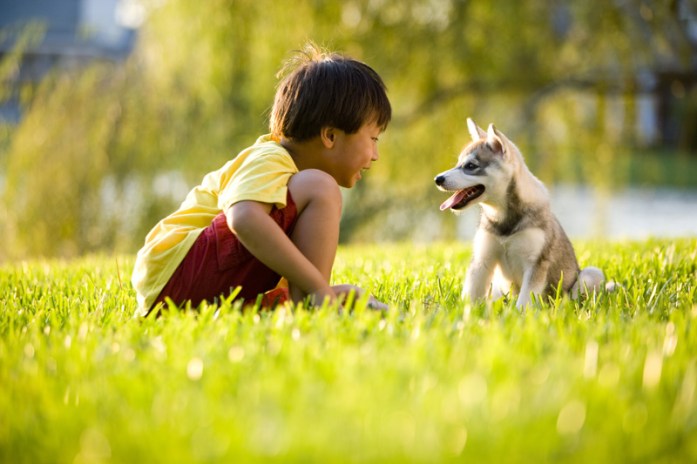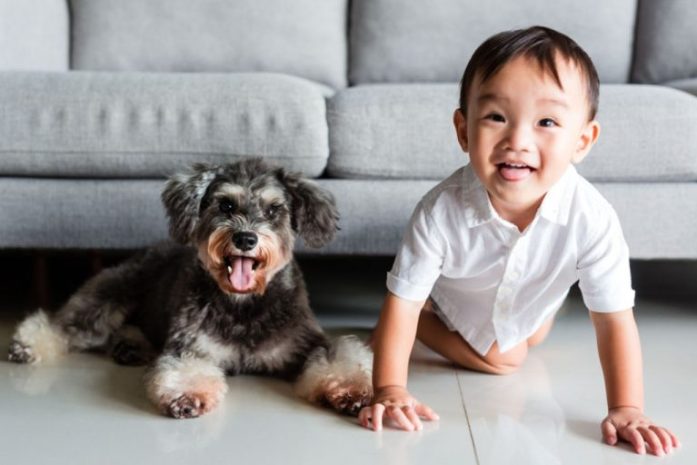We love our pets like family, and often we treat them like one. Unfortunately, tensions can always arise when young children and pets are left alone together. Whether you are expecting a child or planning to adopt a cat or dog, you will have to make some changes to help your children and pets get along in your home.
Nevertheless, no matter how well behaved your child or pet is, accidents can still happen. For instance, young children often do not often understand that pets have feelings and can feel pain in the same manner that they can. Additionally, children may also not be able to always pick up on a pet’s subtle body cues.
Thus, in this article, we will be providing some tips from the experts on how to help your children and pets live harmoniously within the same household.
General Tips To Help Your Children & Pets Get Along

Supervision
This applies for all animals, such as dogs, cats, birds, reptiles or any other pets. You should always supervise your children around your pets. This is especially important if you have younger children. It is never a good idea to leave them unattended as children will not always realise it when they are playing too rough with an animal. Even accidentally dropping the pet can trigger it, resulting in actions such as growling, snapping, scratching or even biting. Therefore, always keep your pets and children within reach and under constant supervision to prevent any unfortunate mishaps.
Teach Your Children Boundaries
The next step to helping your children and pets get along is to set strict boundaries. Additionally, your children will also need to learn proper body language before approaching your pet. For example, they should not hover over your pet or try to corner them. Nor should they climb on top of your cat or dog at any time, pick them up, pull their fur or play with their tail.
Teach your children to learn the behaviour cues that your pet may show when they want to be left alone (such as an arched back for cats or a dog baring their teeth). In addition, teach your children to play calmly and gently with your pet so as not to over excite them. Children can also be taught the basic commands used to train your pet, such as sit, drop, shake hands etc.
Help Your Children & Pets Get Along — Tips For Dog Owners

Understand Your Dog’s Body Language
Dogs are unable to vocalise how they feel or how they wish to be treated. Thus, we have to teach our children to read our dog’s body language, so as to gauge when the dog might be afraid, stressed, or anxious. For example, here are some of the signs that your pooch wants to be left alone:
- Excessive yawning
- Drooling
- Licking their mouth
- Furrowed brow
- Tense body
- Baring their teeth
- Turning their head but still looking at you
- Low growling
- Cowering or hiding
By helping your child to better understand your dog, it will help to keep both of them happy and safe!
Reward Your Dog for Good Behaviour
The best way to get your dog to continue to behave appropriately around children is through positive reinforcement. Hence, every time your pooch displays proper behaviour around your children, give them a treat! By doing so, it will encourage them to be nice and enjoy your child’s company.
Respect Your Dog’s Boundaries
If your dog does not enjoy being around children, do not force them to do so, even if they are usually friendly. Do provide them with a safe space such as a dog bed or crate for them to retreat to when they feel overwhelmed. In such situations, a pet trainer or animal behaviourist may be ideal to help your dog feel more comfortable around your children.
Help Your Children & Pets Get Along — Tips For Cat Owners

Learn Your Cat’s Body Language
Just like dogs, cats use body language to express when they are distressed or just simply want to be left alone. For instance, here are some signs that your cat may need some space:
- Twitching or partially flat ears
- Tense body
- Eyes wide with pupils dilated
- Flicking of tail
- Hissing and/or growling
- Cowering or hiding
Teach Your Children How To Properly Handle Your Cat
Teach your children the right way to pick up a cat and how to tell when they do not want to be handled. Every cat is different — while some cats love belly rubs, yours may not. Therefore, you will need to learn your own cat’s “do not touch” zones and make sure your children know them well.
As a general rule, tell your children to avoid touching a cat near areas such as the whiskers, belly, tail, bottom, or feet. Most cats prefer gentle pets and scratches under the chin or behind their ears, while only some cats enjoy gentle petting along their backs.
Additional Tips Help Keep Your Children & Pets Safe

Do teach your child not to:
- Provoke or purposefully frighten their pet(s). Cats in particular have excellent memory which can consequently lead to discord and poor relationships in the future.
- Not disturb them while they are eating.
- Make unnecessary loud noises, especially if you have an anxious pet.
- Grab or pull a cat or dog by its tail, as this can cause severe damage to the pet’s spinal cord.
If you are planning to adopt a cat or dog into your household, do check out “Things You Need When Getting Your First Cat” or “Things To Know Before Adopting A Dog” as you might find these helpful!





